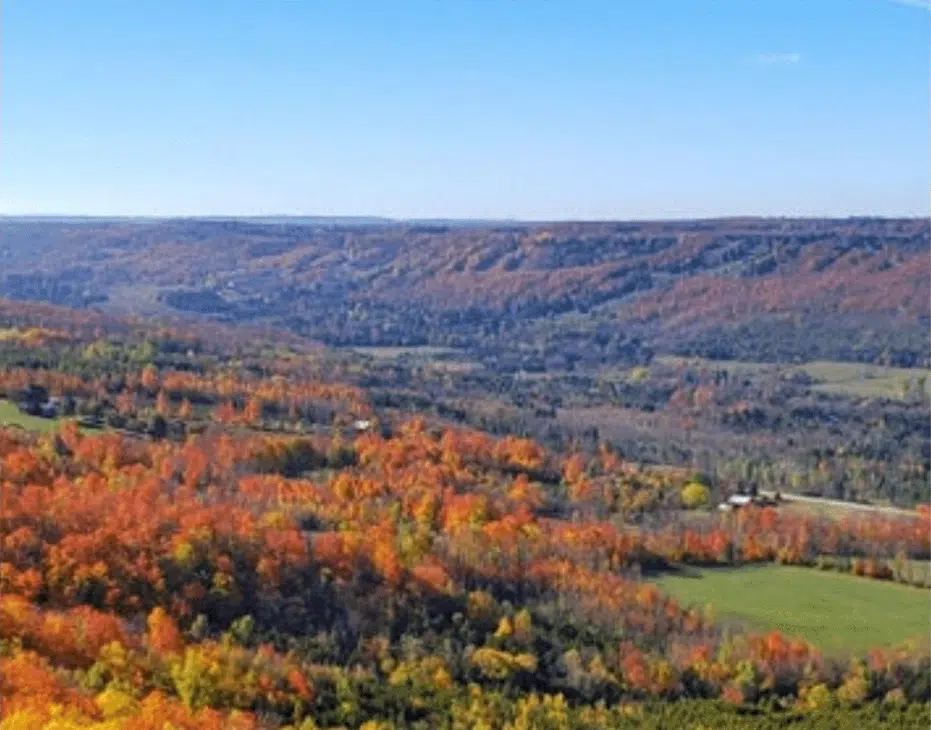The Municipality of Grey Highlands is facing a legal challenge from a group over its sale of the former Talisman lands to Westway Capital.
Chair of The Protecting Talisman Lands Association Jane Pyper says a notice of application was filed in the Ontario Superior Court of Justice in Owen Sound in November 2021. The first hearing was scheduled on Wednesday.
According to Pyper the court case is not geared to hear the full merits of the of the application. Pyper says at this point they are just asking the presiding judge to allow them the full 180 day period following the sale until the case has been brought before the courts and not finalize it sooner.
“We have made many attempts to try to talk to the municipality, and we have written them, we have phoned them, we have sent emails, we filled out surveys, we have done petitions, we have appeared before council, they have never responded in any substantive way to any of our questions,” says Pyper.
The association says some of their concerns with the sale of the Talisman lands, includes how in the spring of 2021 the municipality paid The Planning Partnership to consult with the community on the vision of Beaver Valley, collecting close to 900 points of input through sessions and surveys.
The association says in these responses, they stood united to protect the Beaver Valley.
According to the association, council did not wait for the report and instead went to proceed with the sale to Westway.
Bayshore Broadcasting News attempted to reach Grey Highlands CAO Karen Govan for comment, but did not receive a response prior to deadline.
Last week, a by-law to sell 133-acres of property was brought forward to council and unanimously passed.
The municipally-owned land was sold to Westway for $2.5 million, with the golf course at Talisman costing $1 million and the upper rural land $1.5-million.
The Talisman Ski Resort closed in 2011 declaring bankruptcy.
The municipality bought the whole property in 2013 after it accumulated $2 million in tax arrears, and then severed the land into thirds.
It sold the resort portion to a numbered company (2420124 Ontario Inc., represented by Phil Calando and Brian Ellis) and kept the 59 acres of recreational land overlooking the ski hills. Grey Highlands also owned the 75 acre golf course property.
Prior to reaching this item in the council agenda, over 30 residents voiced their displeasure with the sale, criticizing council for not doing their due diligence and not selling the land to the Escarpment Biosphere Conservancy (BC), who offered over $2.7 million.
“We don’t believe the municipality has followed its own policy on the disposal of surplus lands and we asked them why they chose the method they have chosen, and they have chosen not to respond to us. So we are taking that to the courts because their policy for the disposal of surplus lands calls for a competitive process, a transparent process, they are supposed to declare it surplus and have some sort of way for parties to express interest. What happened it seems, they didn’t declare the land surplus until the end of the process, they hired what is called an investment attraction firm who was supposed to find interested parties, as far as we can tell they found only one interested party even though there was another, which was the conservancy,” says Pyper.
Pyper says the whole process seemed very unclear and unfair to potential purchasers, and believes the municipality was misleading with the property sold.
“What they just announced the sale of is a former golf course which has pretty much been debunked for 11 years, they revived it briefly and it didn’t do well and went debunked again and the parcel at the top, which is currently rural, used for agricultural purposes. That is what they sold, they keep talking about reviving the resort, the resort wasn’t sold it is owned by a different property owner who continues to own it and continues to say he wants to revive the resort. In fact what the municipality is doing, is encouraging development on what is currently green space,” says Pyper.
The association also believes the community and municipality can achieve substantial long term economic benefits through the protection, restoration, and enhancement of the natural areas and landscapes surrounding Beaver Valley.
Any large scale developments on the public lands at Talisman to maximize short term profits would result in long-term environmental and economic loss, accord to the association.
While the association is not connected to the conservancy, Pyper says they support their ideas.
“We liked their ideas there were other community members that wanted to promote health and wellness there. I think that there were many possibilities for that land, but we have all been cooperating and talking to one another,” says Pyper.



